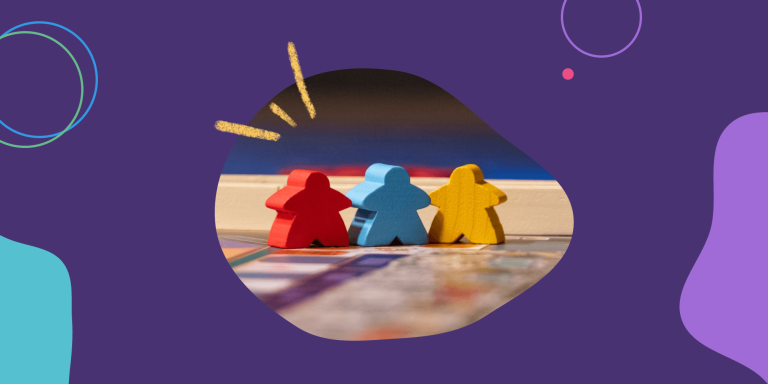5 Sprint Retrospective Benefits That Will Transform Your Team

Cognitive psychologist Amos Tversky once said, “You waste years by not being able to waste hours.” The same is true if your team feels too busy to hold retrospectives and reflect on how to improve your work.
You run, run, run from one project to the next, without ever taking time to learn from your mistakes and successes. By not “wasting” a few hours in reflection, you stand to lose much more in the long run.
The five main benefits of retrospectives are:
- Increase transparency and accountability.
- Strengthen team dynamics and trust.
- Promote adaptability and risk-mitigation.
- Drive continuous improvement.
- Boost morale and motivation.
In this article, we dig into each benefit in detail and give you some tips for how to reap them in your own retrospectives.
1. Increase transparency and accountability
Retrospective meetings are opportunities to bring up problems and take responsibility for them. As part of Scrum’s sprint cycle, their recurring nature also ensures you don’t forget about improvement initiatives from previous sessions. But they’re not only for Scrum teams, project teams can also benefit from lessons learned meetings or post-mortem meetings, which also have the same end goal.
Because you usually hold retrospectives with your team and not outside stakeholders, they’re a safe space for people to raise concerns and admit mistakes.
When you can share opinions without blame, you create a comfortable environment for your team, leading to more valuable feedback from everyone.
Examples of increased transparency and accountability in retrospectives
📌 Situation 1: A development team regularly encounters “last-minute” challenges when deploying code. During a retrospective, one developer admitted to sometimes bypassing QA tests to save time because of the pressure to meet the sprint goal. This insight led to a discussion about how the team could allocate time more efficiently and ensure everyone could complete their work within the sprint without shortcuts.
📌 Situation 2: A marketing campaign didn’t achieve the expected results. During a retrospective on this project, the team realized everyone had different understandings about the campaign’s objectives. These insights prompted the group to revise their project briefs and kick-off meeting formats.
2. Strengthen team dynamics and trust
By giving team members an opportunity to reflect on their work together in a safe environment, their ability to collaborate and trust each other increases because:
- Discussing challenges and celebrating successes creates a sense of shared purpose as teams align on goals, priorities, and tactics for future work.
- Allowing teams to autonomously solve challenges, support each other, and improve performance increases their resilience and strengthens their bonds.
- Taking time to reflect together increases understanding of everyone’s strengths and weaknesses within the team, boosting trust and the ability to collaborate effectively.
- Providing space for every team member to share their thoughts ensures inclusivity, even for introverts.
A great retrospective brings your team closer together by helping each member voice their opinions in a transparent and communicative environment.
Examples of stronger team dynamics and trust from retrospectives
📌 Situation 1: During a retrospective, an introverted team member shared they had a solution to a problem that persisted over multiple sprints; they hadn’t found the courage to voice it during regular meetings. With the team’s support, they implemented the idea and solved the issue.
📌 Situation 2: After a project with mixed results, a retrospective allowed team members to voice their challenges. They realized several members had overlapping responsibilities, leading to confusion and mistakes. This discovery led them to create more precise role definitions.
3. Promote adaptability and risk-mitigation
In a world of constant change, your team’s ability to adapt becomes its superpower–or Achilles’ heel. Retrospectives highlight what’s working and what’s not so you can double down, course correct, or prevent future problems.
Retrospectives let you see the forest instead of having your nose stuck in the trees by offering a unique bird’s-eye view of your team’s work. They also help your team identify potential pitfalls, threats, or vulnerabilities that you might otherwise overlook during the hustle and bustle of daily tasks.
Examples of better adaptability and risk-mitigation from retrospectives
📌 Situation 1: During their retrospectives, a product team identified a pattern of user complaints post-launch. Recognizing this trend, they adjusted their testing protocols to better mirror real-world user scenarios, mitigating future risks.
📌 Situation 2: The development team realized a feature they were building would soon become obsolete because of upcoming industry regulations. The retrospective allowed them to think through the possible scenarios of how the new rules would affect their product. They pivoted their efforts so that the functionality could still roll out in a slightly different form.
4. Drive continuous improvement
A core tenet of agile is continuous improvement, striving to learn and get a bit better every day. Regular retrospectives embody this principle by embedding improvement into your routine.
Any part of your team’s work is up for review during a retrospective: processes, project deliverables, communication methods, collaboration tools, or team dynamics. If such a broad mandate feels overwhelming, consider trying out different retrospective formats that help you focus on a particular aspect of your work.
Retrospectives help identify gaps in skills in your team and allow you to catch small issues early so they don’t spiral out of control.
When you regularly hold retrospectives, all those sessions create gains that accumulate over time, leading to substantial improvements in team performance and product quality.
Examples of continuous improvement from retrospectives
📌 Situation 1: In a retrospective, a design team realized feedback from developers and product teams often led to significant design revisions, causing delays. To solve this issue, they began joint brainstorming sessions with these teams early on, reducing modifications and streamlining the design process.
📌 Situation 2: A retrospective highlighted frequent communication breakdowns between two departments. Acting on this feedback, they decided to co-locate these departments for specific projects, leading to faster decision-making and improved project outcomes.
5. Boost morale and motivation
Retrospectives aren’t just functional; they also offer emotional and motivational benefits. You can use these meetings to recognize both small and big wins. Celebrating these victories, no matter how minor, fuels optimism and enthusiasm.
Team members can also express gratitude for each other’s contributions during retrospectives. Doing so creates an environment of mutual respect in which members are eager to contribute more, knowing their efforts get recognized and appreciated.
Morale and motivation also go up when people feel heard; recognizing and addressing concerns reduces frustration, resentment, and anger.
Examples of boosted morale and motivation from retrospectives
📌 Situation 1: Team members discussed feeling overwhelmed and unrecognized for overtime work during a product launch. Their team lead, acknowledging these feelings, organized a team appreciation day and adjusted resource allocation for future launches.
📌 Situation 2: During a retrospective, a team noted the consistent contributions of a backend developer whose work often went unnoticed due to its behind-the-scenes nature. Recognizing their efforts in the retrospective boosted their morale and motivated others to value every team member’s contributions, regardless of their visibility.
Why you might want to try retrospectives
Agile teams usually operate at high speed in a constantly changing environment. Without a baked-in opportunity to hit pause, catch your breath, and reflect on what you have and haven’t accomplished, such breaks never happen–you’ll be like hamsters running on a perpetual treadmill.
At best, you’ll make unnecessary mistakes. At worst, you’ll eventually collapse from exhaustion.
As Woody Zuill says:
“If you adopt only one agile practice, let it be retrospectives. Everything else will follow.”
So make time for retrospectives to reap their benefits; as long as you run these sessions well, an hour spent reflecting is never wasted.
📌 Looking for a way to get started with retrospectives? Try Parabol’s free retrospective tool that makes it easy to run your first meeting with a clear structure to guide your team forward.









